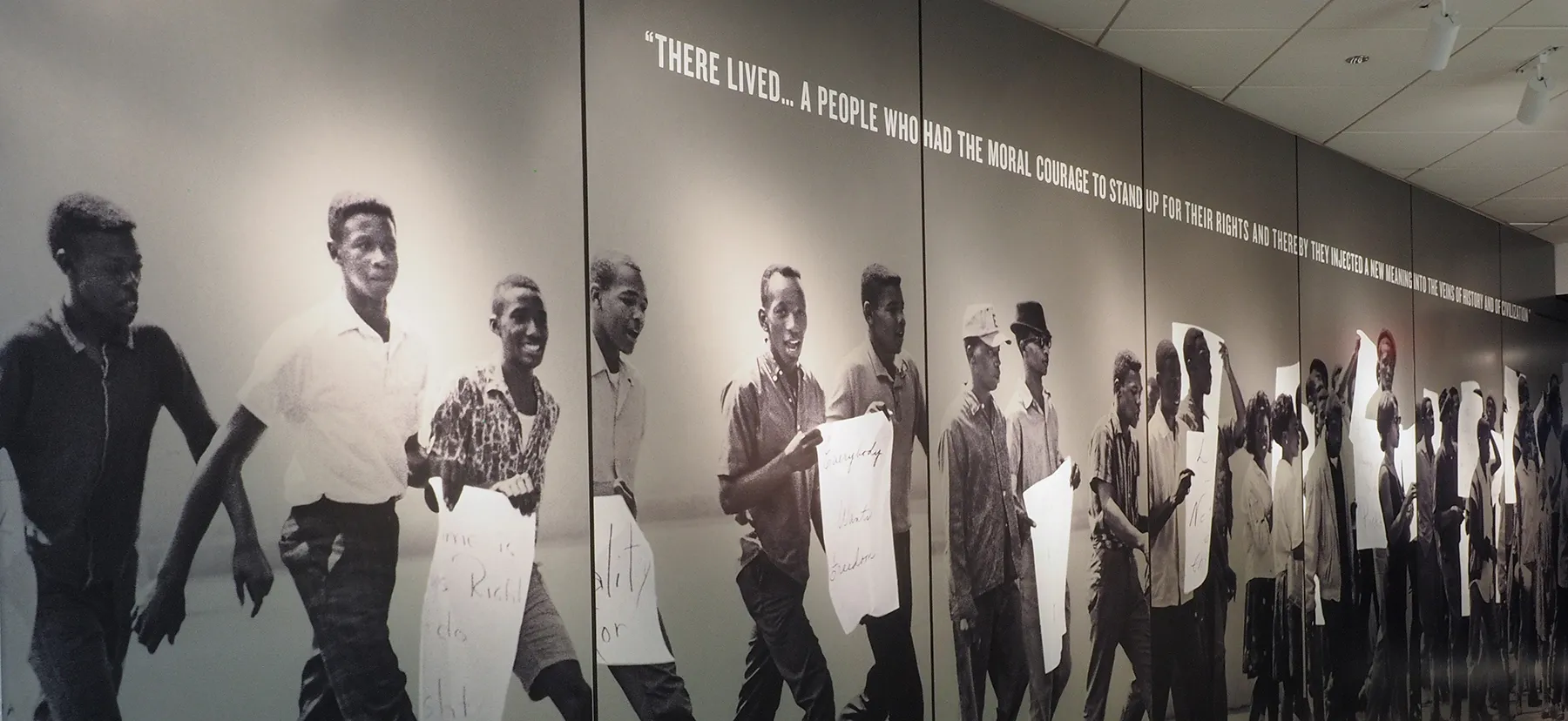Excessive light including that from flash cameras can damage some of the museum’s delicate textile and document artifacts. Please be mindful that copyright laws limit the use of archival photos, audio and footage on display. The museum has license to the images and audiovisuals for exhibition purposes only and cannot grant use rights to others. We welcome visitors to post photos of your museum experience to our social media sites.
The museum carries the Academy Award-nominated documentary short, The Witness: From the Balcony of Room 306, an excerpt of which is shown in the Memphis exhibit. Other films shown in the museum are not available for purchase, but there is a variety of items pertaining to the civil rights movement available in the museum store.
The National Civil Rights Museum is a public/private partnership and is operated as a private, non-profit institution. All monies received (i.e., admissions, gift shop sales, donations, memberships, etc.) go toward the upkeep of the museum and advancing its educational mission through special programs and the work of our staff. The National Civil Rights Museum is not a line item in the operating budgets of the city, county, state or federal governments.
No. The State of Tennessee owns the Lorraine Motel structure, but the museum is run by a non-profit organization.
The listing is under the Lorraine Civil Rights Museum Foundation, dba National Civil Rights Museum. The IRS has designated the museum as a 501 (c) (3) non-profit.
No, but the Tennessee Historical Commission has designated the Lorraine Motel as an historic site.
Though the museum is located at the assassination site of Dr. King and pays tribute and homage to the legacy of this great leader, it is devoted to the thousands of people who were a part of the entire American Civil Rights Movement.
No, these cars are intended to orient visitors to the time period in which they are about to enter. Though Dr. King often was driven to Memphis events in a white Cadillac owned by the late local activist and community leader Cornelia Crenshaw, the cars at the museum have no historical significance.
Yes. Soon after the tragic shooting of Dr. King, many community members set about to preserve and, in some cases, remove distasteful evidence of the crime. One such effort involved the removal of a concrete square on the balcony with the blood stains from Dr. King. Later, that square was replaced.
